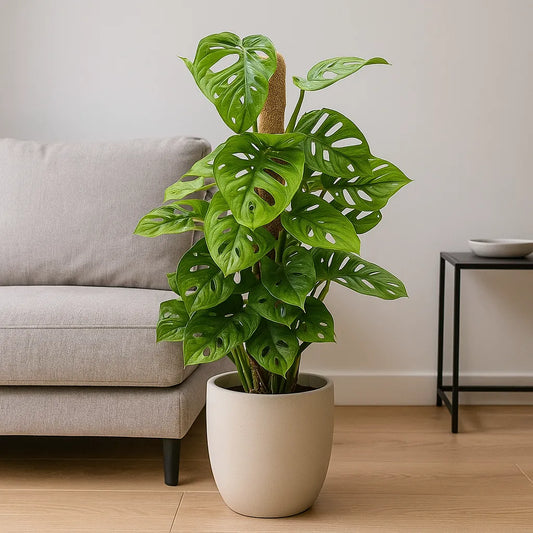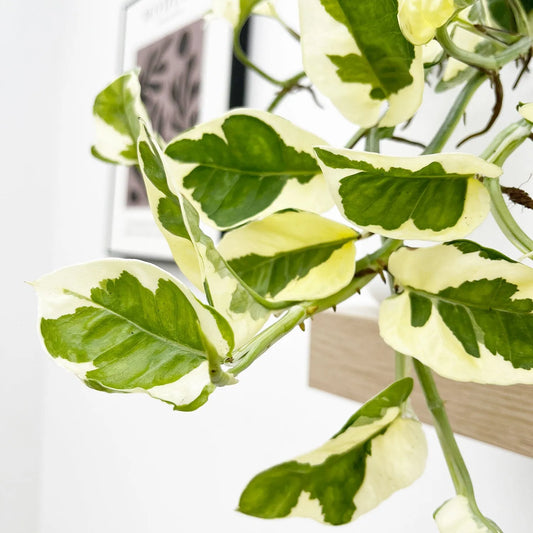How to repot an Alocasia
The best sign that your Alocasia is being well looked after is it’s constant growth. As your plant grows, it’s leaves get bigger and more spectacular, but eventually it will begin to slow and may stop growing completely.
If your plant has stopped growing, and you have made no changes to your care routine it is likely that your Alocasia has outgrown its current pot and needs repotting. In this guide we will go through everything you need to know to successfully repot your plant.
Why does an Alocasia need repotting?
As an Alocasia grows so does its root system. In time, the roots will outgrow the pot and be unable to support the plant. If you do not report the plant to a bigger container quickly it’s growth will slow and the plant may die.
How often should I repot my Alocasia?
Smaller plants should be repotted once every 12-18 months. You should choose a potting vessel one to two inches larger in diameter than your current one to allow for growth.
For larger plants, try to repot them every 18-24 months. Choose a new container that is two to four inches larger in diameter to allow for even growth. Don’t choose a pot too much larger than the previous one as this could drown the plant's roots. Spring or summer is the ideal time to repot as the plant is at its strongest.
Please note: Alocasia plants are toxic, so make sure that you wear gloves throughout the reporting of your plant and wash your hands thoroughly after handling your plant.
How to repot an Alocasia
Check the roots
The first thing to do before you repot your Alocasia is to check that the roots are healthy. To do this, lift the soil out of the pot with a fork until the roots are visible. Healthy roots should be white and thick with no blemishes or spongy parts. You should also check to see if there are any mites or other pests on the roots at this time.
Remove soil from the roots
When repotting your plant you will need to completely replace the soil that it is growing in. Doing this helps the plant establish itself quicker in its new pot and refreshes the nutrients and minerals it has to draw from. You should break up the outer soil with your hands and then gently remove the soil directly around the roots. Be careful not to tear any of the roots as this will both damage the plant and stress it out.
Introduce your Alocasia to your new pot
Introducing your plant to its new pot should be done quickly after removing the soil from the roots. In order to get the process done as quickly as possible you should do a few things first:
- Add a layer of stones to the bottom of the pot to allow the pot to drain properly.
- Next, add the new soil into the bottom third of the pot. Do not press the soil down as it is important that this soil be well-draining.
- Pile up soil in the center of the pot in a mound that rises to near the top of the container.
- Place your plant in the pot so that the roots go down the sides of the mound.
- Cover the rest of the roots with soil until the container is full. Press the soil down until the plant is secure.
- Water the plant well until it begins to seep out of the bottom of the pot. This will help the plant recover from the shock of being replanted.
- Over the next few weeks remember to keep watering well. You may find that the leaves droop slightly, but this is normal just after replanting and they will quickly recover.











1 comment
Marble Queen plant cuttings with rooted growing.
Please advise when ready
If you have similar plants with healthy roots, then please message me.
Sorry I didn’t have facilities to grow plants from cutting
Thanks
Leave a comment
Please note, comments need to be approved before they are published.